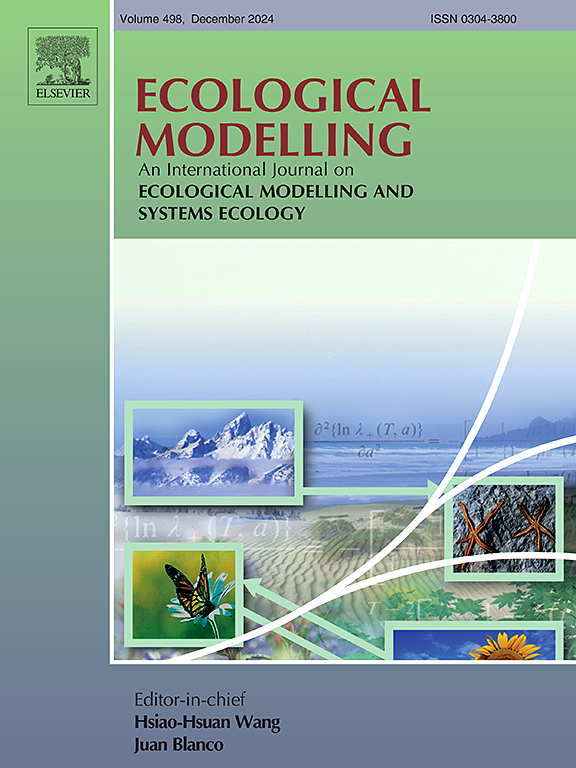场内捕食对不同年龄结构海葵和孢子虫生长的影响
IF 3.2
3区 环境科学与生态学
Q2 ECOLOGY
引用次数: 0
摘要
藻华破坏了沿海生态系统的结构和功能,从而对这些生态系统的退化和进化产生了深远的影响。探索孢子虫在海洋食物网中的生态作用已成为海洋生态学研究的热点。观察发现,海葵作为另一种海洋底栖动物,在其生命周期的不同阶段表现出与棘虫的捕食和竞争相互作用,导致其在沿海环境中的分布模式存在差异。在本研究中,我们建立了一个综合的食物链和生活史模型来解释海葵对孢子虫的捕食行为。研究结果表明,在海葵和孢子虫共存的生态系统中,孢子虫繁殖对稳定状态的影响减弱,孢子虫不容易大量繁殖。此外,海葵作为生物防治剂与非生物策略的结合为抑制螺旋体激增提供了一种有希望的方法。这些结果为深入了解这两个种群的分布格局奠定了理论基础,并为实施有效的防治策略提供了有价值的决策支持和理论指导。本文章由计算机程序翻译,如有差异,请以英文原文为准。
Effects of intraguild predation on growth of sea anemone and scyphozoan with age structure
Scyphozoan blooms disrupt the structure and function of coastal ecosystems, thereby exerting a profound impact on the degradation and evolution of those ecosystems. Exploring the ecological role of scyphozoan in the marine food web has become a critical concern in marine ecology. Observations revealed that sea anemones, another type of marine benthos, exhibit predator–prey and competitive interactions with scyphozoans at different stages of their life cycle, resulting in contrasting distribution patterns in coastal environments. In this study, a comprehensive food chain and life history model was formulated to account for the intraguild predation of anemones on scyphozoans. Our findings indicate that, in an ecosystem where anemones and scyphozoans coexist, the impact of scyphozoans reproduction on the stable state was diminished, and scyphozoans are not prone to mass blooms. Furthermore, the integration of anemones as biological control agents with non-biological strategies offers a promising approach to suppress scyphozoan surges. These results lay the theoretical foundation for an in-depth understanding of the distribution patterns of two populations, and offer valuable decision-making support and theoretical guidance for the implementation of effective control strategies aimed at mitigating scyphozoan blooms.
求助全文
通过发布文献求助,成功后即可免费获取论文全文。
去求助
来源期刊

Ecological Modelling
环境科学-生态学
CiteScore
5.60
自引率
6.50%
发文量
259
审稿时长
69 days
期刊介绍:
The journal is concerned with the use of mathematical models and systems analysis for the description of ecological processes and for the sustainable management of resources. Human activity and well-being are dependent on and integrated with the functioning of ecosystems and the services they provide. We aim to understand these basic ecosystem functions using mathematical and conceptual modelling, systems analysis, thermodynamics, computer simulations, and ecological theory. This leads to a preference for process-based models embedded in theory with explicit causative agents as opposed to strictly statistical or correlative descriptions. These modelling methods can be applied to a wide spectrum of issues ranging from basic ecology to human ecology to socio-ecological systems. The journal welcomes research articles, short communications, review articles, letters to the editor, book reviews, and other communications. The journal also supports the activities of the [International Society of Ecological Modelling (ISEM)](http://www.isemna.org/).
 求助内容:
求助内容: 应助结果提醒方式:
应助结果提醒方式:


